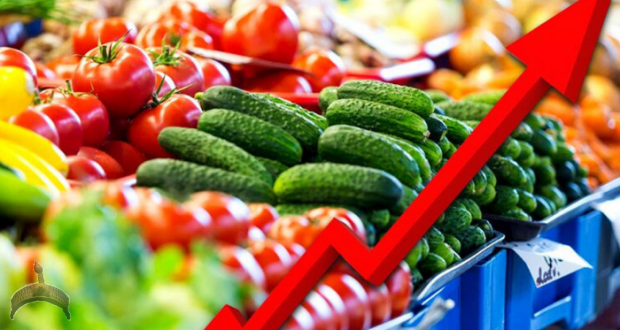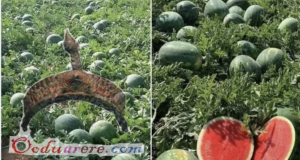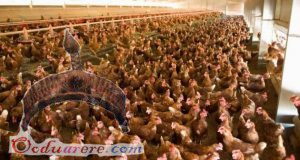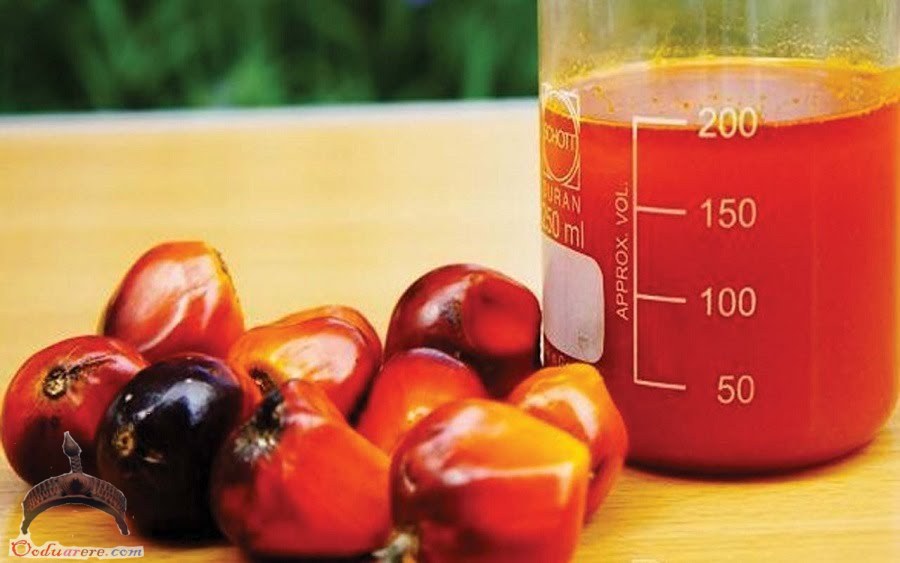| We talk a lot about food price inflation being a major problem in Nigeria, and while many Nigerians appear to have some appreciation of the issue, I am not sure that most people in the country really understand how bad things are. The latest figures mean that a loaf of bread which costs ₦100 today, will go for ₦115 in a year’s time. Or remain at ₦100, but with reduced quality. Let me, as a result, point out a couple of things that might help, using rice, a staple eaten all over Nigeria, as a proxy. According to the Food and Agriculture Organization, in 2000, a 50kg bag of rice averaged ₦2,500. In 2014, according to the National Bureau of Statistics, a 50kg bag of rice averaged ₦10,000. According to surveys by SBM Intelligence, at the end of June 2020, a 50kg bag of rice went for an average of ₦26,000. In two decades, the price of the most widely consumed staple food in Nigeria (and the world, according to the Food and Agricultural Organization) has gone from ₦2,500 to ₦26,000. A 1000% increase in 20 years. One Thousand Percent. Let us see what the rate of increase has been elsewhere. The U.S. Bureau of Labor Statistics says that US rice prices have climbed by about 62% from 1999 to 2020. In other words, rice that cost $20 in the year 1999 now costs $32 in 2020 for an equivalent purchase. So over the last 20 years, Nigeria Rice Inflation rate is 1000% while the US Rice Inflation rate is 62%. The data for rice is hard to get for many other countries which are major rice producers and consumers, but overall food inflation is a useful proxy for gauging where the price is trending. In China, the world’s biggest rice importer, according to the National Bureau of Statistics of China,food inflation has remained relatively low, exceeding 10% four times in the last two decades – 2004, during the 2008 financial crisis, at a brief point in 2012, and then during the COVID-19 pandemic. At three other points in the same two decade period, a sustained period from 2000 to 2003, 2009, and between 2015 and 2017, food inflation in China was actually below zero! The United Kingdom, says its Office of National Statistics, has only seen double-digit inflation this century during the 2008 financial crisis. After a tumultuous period throughout the 2000s and early 2010s, India, the world’s primary rice-growing nation, saw single-digit food inflation from 2014 up until the coronavirus pandemic according to that country’s Ministry of Statistics and Programme Implementation. Kenya and Ghana, significant African rice consumers have their own price roller-coasters – Kenya went from a food inflation rate of 26% at the end of 2011, to a comparatively tame 8.15% in June 2020 per figures from the Kenya National Bureau of Statistics. Ghana, which imports more rice per capita than Nigeria primarily due to a much smaller production footprint, also enjoyed single-digit food prices for most of the last decade until April where prices spiked to 14.4% from 8.4% in March, a sequence which is worrying the Ghana Statistical Service. Global rice consumption has seen a slight increase over the last several years. In the 2019/20 crop year, about 493.126 million metric tons of rice was consumed worldwide, up from 437.18 million metric tons in the 2008/2009 crop year, according to the US Department of Agriculture’s Foreign Agricultural Service. But even factoring for rising consumption, the price rise in Nigeria is a clear statistical outlier. If we continue on this trajectory and get another 1000% increase over the next 20 years, in 2040 a 50kg bag of Rice will cost ₦260,000. If you think it is impossible, think of the following prices from 1980: Nigeria Airways flight, Lagos to Port Harcourt, ₦28; brand new Peugeot 504, ₦6,000, and the cost of a bottle of Coca-Cola was 10 kobo. By 1986, the cost of a plane ticket from Lagos to New York and back was ₦17,430. Right now, a ₦20 note is almost impossible to find, and most Nigerians have forgotten what a coin looks like. Just this month, a new analysis by the Food and Agriculture Organization and the World Food Programme indicated that Nigeria, along with 26 other countries, is “on the frontline of impending COVID-19-driven food crises, as the pandemic’s knock-on effects aggravate pre-existing social drivers of hunger.” The UN agencies say a combination of falling employment and wages which led to people having less money, food supply production and supply disruptions, plummeting government revenues which are depleting critical safety nets such as social protection and school feeding programs and rising political instability which fuelling resource conflicts have put a firm lid on agricultural production and markets in these countries. Nigeria checks out on all those indicators We all know the fable of the boiling frog that says that if a frog is put suddenly into boiling water, it will jump out, but if the frog is put in lukewarm water which is then slowly brought to a boil, it will not perceive the danger and could just sit there and be cooked to death. The lesson of the story points out that the disaster that creeps up on you slowly in a way that you easily adjust to is the most dangerous kind because it doesn’t adequately trigger us into the mindset required to deal with situations. Nigerians are not only being boiled slowly. Onions, pepper, thyme and curry are being sprinkled into the pot we are being cooked in. Data like this shows clearly why we are the Poverty Capital of the World. A 1000% increase in food costs within a generation is a level of poverty that will break a people. Pensioners entered into 1000% inflation with income from a time when a bag of rice cost ₦2,500. That has definitely broken millions of people. What are the social costs? This 1000% increase in food prices is reflected in our economic and security situation and makes you understand why we have these levels of insecurity, kidnapping, and unrest all around Nigeria. My organisation’s consumer price measure, the Jollof Index, has consistently shown a close correlation between pockets of the country with elevated insecurity and high food prices. We need to be mindful of the economic and social importance of price stability. Price stability makes high levels of economic activity and employment achievable. Correct consumption and investment decisions become easier to make. Price stability helps keep interest rates stable and makes them more viable to develop the kind of credit-based system that can spur economic growth. If you have these things, you can keep your people in enough employment and economic safety to minimise crime and unrest. Costco is a huge American supermarket chain. The price of their signature hot-dog-and-soda combo was $1.50 in 1985. This hot-dog and soda combo still costs $1.50 today. It has stayed the same for more than 35 years. It is a bit of an aberration, but it gives a clue as to how badly the Nigerian has suffered because of terrible economic policy handling by its leaders. We cannot say the same about Mr Bigg’s in Nigeria, because Mr Bigg’s franchise is virtually out of business. Are you ready to pay ₦250,000 for a 50kg bag of Rice in 2040? Is your pension going to be able to handle a 1000% increase in living expenses? Nigerians who were in their thirties 20 years ago are in their fifties today and when they are in their seventies, they would have experienced about a 10,000% rise in inflation over the last 40 years of their lives if this continues like this. Yes. Ten Thousand Percent. Zimbabwe had a 1000% inflation rate yearly. They are a horror story. At some point in Zimbabwe, you needed to be carrying 10 or 20 million Zimbabwean dollars to do a decent amount of shopping. An ordinary supermarket trolley could easily carry ZM$20 million worth of groceries. We are talking about groceries, not jewellery. A part of what brought Zimbabwe to that point was the insistence on subsidising consumption activity that was not bringing the desired growth and printing local currencies to be able to pay these subsidies. This triggered inflation as the money supply rose without a corresponding rise in productivity. Nigeria is on this path with absurdly unproductive subsidies, and obsession with ‘managing’ the value of the naira and spending on unviable projects being propped up by the printing of more money. Add the borrowing spree embarked on by the Buhari administration and it’s looking increasingly scary. Gold is generally seen as a reliable store of value and over the past 30 years, the price of gold has increased by around 280%. Over the same period, the Dow Jones Industrial Average (DJIA) has gained 839%. If investors had known that Nigerian rice Prices would rise by 1000%, they would have abandoned gold and invested in warehouses of rice at Cotonou. Warren Buffet has a lot to learn apparently. Cheta Nwanze is lead partner at SBM Intelligence |

 Ọmọ Oòduà Naija Gist | News From Nigeria | Entertainment gist Nigeria|Networking|News.. Visit for Nigeria breaking news , Nigerian Movies , Naija music , Jobs In Nigeria , Naija News , Nollywood, Gist and more
Ọmọ Oòduà Naija Gist | News From Nigeria | Entertainment gist Nigeria|Networking|News.. Visit for Nigeria breaking news , Nigerian Movies , Naija music , Jobs In Nigeria , Naija News , Nollywood, Gist and more








